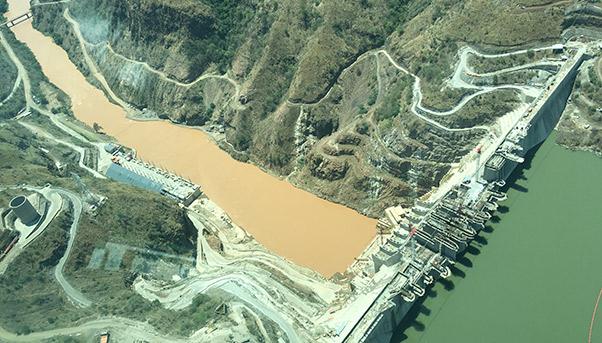Salini Impregilo has been in Ethiopia since 1957. So its presence is not related to a single project but rather a long-term industrial strategy that coincides with the development of the country.
In the past decade, Ethiopia’s gross domestic product (GDP) has grown by an annual average of 10% as it has developed modern energy policies to strengthen this growth.
In this way, water as a source to be used for the production of energy remains a strategic asset, and Salini Impregilo has given its contribution throughout the years to help it become a force for development in the country. Today, 85% of the energy produced in Ethiopia comes from hydroelectric plants, while an amount whose value equals 30% of its GDP has been invested in recent years into the sector.
One of the most ambitious projects that has developed over the long term has been the use of the rivers Gilgel and Omo for their potential as hydro powerhouses. The first projects date back to the 1980s with the involvement of Salini Impregilo as a strategic partner for the construction of three major hydroelectric plants. Work on the first dam – the Gilgel Gibe I on the Gilgel River - began in 1986. After a long interruption during the 1990s, it was completed in 2004.
The Gilgel Gibe I dam is but the first step along a very ambitious path that leads to the construction of two bigger and more powerful hydroelectric plants (apart from a fourth called Koysha on which Salini Impregilo has started work). In 2005, work began on the second project: the Gibe II on the Omo River. It ended in 2010.
The timing of each project is so close to the one another that in 2006, while work continued on Gibe II, Salini Impregilo’s engineers began work on the third dam: Gibe III.

Gibe III
As construction of Gibe III progresses on the Omo River, the first two dams have begun to produce important results. Gibe II, for example, is guaranteeing the supply of portable water for 200,000 local residents. What is more, Gilgel Gibe I and Gibe II, together with Beles (an older hydroelectric plant also built by Salini Impregilo) supply 50% of Ethiopia’s energy needs.
The last chapter of this ambitious industrial plan closes in 2016 when work on Gibe III comes to an end some 300 kilometres southwest of Addis Abeba. The complex, which has already started producing electricity, includes a dam 250 metres high (the highest roller-compacted concrete (RCC) dam in the world) and a plant with 10 Francis turbines with a production capacity of 1,870 megawatts (MW).
Gibe III is an example of engineering excellence. For example, between December 11 and 12, 2014, it reached a world record for pouring RCC at the fastest rate - 18,519 cubic metres in 24 hours. It then set a second record in terms of volume in June 2015 with six million cubic metres of RCC. Then there was the record set also in 2015 by its reservoir for the amount of water it could hold: more than one billion cubic metres (the actual volume is 9.7 billion cubic metres while once it is entirely full it will reach 15 billion).
In terms of the size of the workforce, Gibe III had one of the biggest construction sites in Africa with on average 5,000 people working in it. At one point it reached a peak of 7,500.
Apart from the numbers, the impact of the dam on the Ethiopian economy is substantial. When it is fully operational, it will increase by 85% the level of the country’s energy production. It is a massive amount of electricity that, once domestic needs have been met, will be exported to neighboring countries. In fact, half of the electricity produced by Gibe III will be sold abroad, contributing to the transformation of Ethiopia into a regional energy hub as the country pursues an industrial development plan initiated many years ago.


